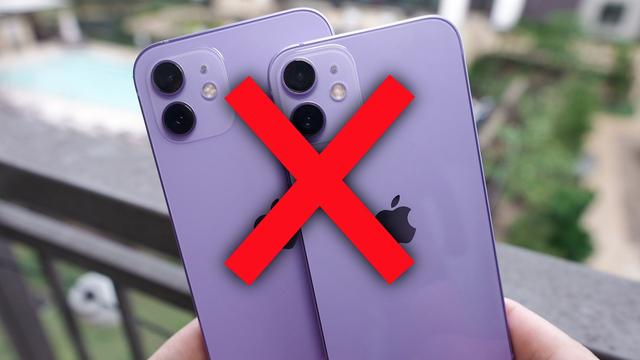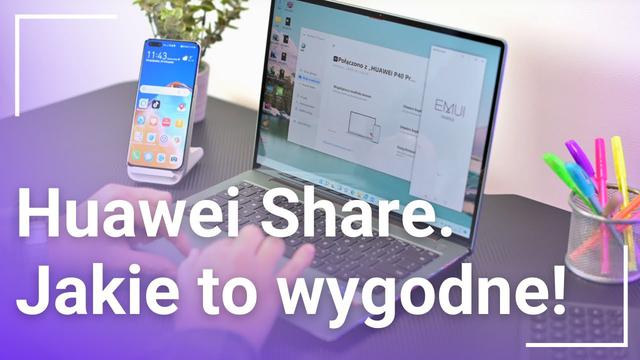When in 2007 Steve Jobs at the Macworld PO told the first iPhone, he meant a trend that continues to this day.Telephone devoid of- keyboard, instead of a small display- large, at least for those times, a screen supported by touch.And of course access to the Internet, which made us still online. Today this iPhone would not impress anyone.If only because it had a screen with a diagonal of only 3.5 inches, while today's smartphones are usually six-cylinders.After years of rapid development, evolution released, which can also be seen from sales statistics.In 2015, Apple fans changed the iPhone to a new model on average once every two years, in 2018 they decided to do it only after 33 months.Global sales of smartphones drop by up to several percent per year.
According to Amy Webb, this is not just a temporary slowdown.As he writes in the report "Tech Trend Reports 2019" - we observe the beginning of the end of the smartphone era. For five years we will stop carrying one universal device with us.Smartphones will be replaced by a package of smaller wearable devices, the so -calledWearaights, which we will control by voice, gestures and touch.Of course, before this happens, new, even more perfect smartphones will appear.- This market will be standing strongly for many years.The smartphone does not go anywhere, but it can change its form - believes David McQueen, an analyst at ABI Research.
Improving the classics
Although smartphone screens usually have about 6 inches today, designers are trying to use even more surface surfaces on the image.The displays are becoming more and more elongated and rounded.Such treatments allow you to maximize the diagonal, such as in Sony Xperia 1 to 6.5 inches (cinema proportions 21: 9), while improving the ergonomics of grip and service with one hand.The second trend is to reduce the elements on the front surface of the phone, creating an indentation (so -called notch), in which the camera and other sensors are located.The idea is for a smartphone to become a homogeneous glass screen in a while.First, the manufacturers began to hide the camera in the retractable module - this solution occurs in Xiaomi Mi Mix 3, Honor Magic 2 or Oppo Reno.Xiaomi Mi 9 is a step further. It uses Under-Display Camera technology, which is a completely invisible camera hidden under the screen.
The cameras themselves become so good that even very demanding users are starting to take pictures with a phone, not a digital SLR.Already last year, Huawei P20 was a five -time hybrid zoom.Today, the upper limit of possibilities is marked by models such as Huawei P30 Pro or Oppo Reno 10x Zoom.They have so -calledPeriscope zoom and offer 10x hybrid rapprochement, which can be digitally expanded to up to 50-60 times.Next year, the best models can offer up to 15- or 20-fold ZOOM, which allows you to take very accurate photos from a long distance.
Everything also indicates that at the back of the smartphone there will be three or four separate, wide -angle lenses, just like in Huawei P30 Pro.This means that the phones will take good photos even in low light, when our eye only distinguishes contours.
Fold -out misfire
The current pattern of the smartphone assumed that it was a rigid rectangle.One way to increase the screen surface is to create phones with folding elements.There are ideas for flexible displays wrapped around the device or reminiscent of a book card.The larger screen is to make the smartphone remain a device in your pocket, but will also take over the tablet functions.Three manufacturers have been presented for the prototypes of submitted telephones.The first was the little -known Royole company, which showed the Flexpai device (7.8 -inch screen).The next market leaders were: Samsung with the Galaxy Fold (7.3 inches) and Huawei with Mate X (8 inches).Rumors say that Motorola Razr 2019, Oppo Foldable and double folding Xiaomi Mi Flex are to have a similar construction.Work on this type of phone was even confirmed by Google, but it should not be expected in the near future.

It seems that building a folding smartphone is not easy.Samsung was to introduce Galaxy Fold to the market in April, but due to technical problems it moved it to an indefinite future.Huawei Mate X was to debut in June and cost about 10,000PLN, but it is already known that this premiere will be delayed at least three months.Experts are not sure if the submitted phones will be accepted.The larger screen is impressive, but the smartphone equipped with something like this loses one of its advantages - slenderness and lightness.In addition, such a display format is a revolution.A 7-8 inches square screen will not be a competition for tablets.It can also be difficult to accept for smartphones users who have already got used to the vertical image format dominating in applications such as Snapchat or Instagram.
Display with a super -fast network
So it is possible that the real revolution will cause something completely different. In the coming years, telecommunications companies want to offer us even faster mobile access to the Internet. It is primarily about 5G technology, as well as new WiFi standards. Over the next few years, most new smartphones are to enable the use of such amenities. In practice, this means that we will be able to watch on a video in excellent quality, broadcast on a regular basis through the network. But why stop at movies? In the same way we will be able to use games (as in the already available NVIDIA Gamestream technology today) and virtually every service that applications today provide. And this means that we will not have to install them on the phone. - The smartphone will become a "stupid" display for transmission of the sound of sound via the 5G network. Most of the calculations that the phone is made today will be transferred to the cloud - believes the analyst David McQueen.
In this situation, the phone will become "thinner" because it will not need an expensive and energy -consuming processor or large amounts of memory.Connections we know today will probably also disappear, such as a headphone jack or a USB port.All communication with the phone will be wireless.You won't even need a "drawer" for the SIM card - it is already replaced by the ESIM module, permanently built into the phone.The smartphone of the future will therefore become a waterproof uniform glass plate, and its technical capabilities will depend on advanced applications operating on online servers.
The same principle should also follow other mobile devices that will become more intelligent.Dressable technologies (so -called wearables) will not need advanced electronics, which will translate into a decrease in their price and longer operation on a single battery charging.
Phone in pieces
Here we come to the vision presented by Amy Webb.In 5-10 years, more and more functions, which we associate with a smartphone today, will be taken over by wearable devices: earphones, glasses, watches, rings, bracelets equipped with biometric sensors, speakers and microphones.Today, most of them work independently of each other and need communication with a smartphone or computer.Webb predicts that over time this will change and all these devices will merge into one jointly working ecosystem.
Intelligent watches are the first devices that can be used without a smartphone.An example would be the Apple Watch Series 4, Samsung Gear S3 Frontier LTE, LG Urbane 2ND Edition LTE models.With their help, you can conduct talks (even without the need to connect wireless headphones), write or dictate SMSs, read emails, listen to music, check the position on the map and monitor your physical activity.
In the future, the so -calledHearables, or ear devices.They will perform the function of artificial intelligence of a voice assistant, which based on measures of brain activity, blood pressure, pulse, movement, sound analysis will predict what and when we want to do.For example, in a restaurant, when he senses that we are focusing on a conversation with our friends, he will mute the background sounds (music, conversations of other guests), and strengthen the voices he has learned before.
Already today there are headphones that have additional possibilities.Jabra Elite Sport measures the pulse in the ear, Google Pixel Buds or Myman Click can explain conversations conducted in different languages on an ongoing basis.The Dash Bragi, in turn, is a model that senses the movements of our head.Thanks to this, we can, for example, accept combination, nodding or rejecting them, shaking their heads.
In some time there may also be Heraables, for which no voice will be needed.An example would be the Alterego project, i.e. an interface attached to the face, which allows you to give commands, e.g. a vote assistant without opening lips.All you have to do is think about saying some words, and the sensors will pass on the information of our muscles to algorithms of artificial intelligence reading what we say silently.Communication the other way is also silent.Alterego transmits the sound to the inner ear through the skull bones, without disturbing the usual auditory perception.
Instead of a screen
However, one should not forget that the smartphone is above all a device showing the image.Gadgets placed in ears or wrists can be useful, but they will not allow us to watch the movie, virtual gameplay, check the map or immerse ourselves in augmented reality (AR).The successor of the phone must have a screen or something that will replace it.The first solution of this type will probably be glasses such as Google Glass.
It is true that their early version shown six years ago did not conquer the world, but another model goes on sale.Google Glass Enterprise Edition 2 is to be intended for specialists - they will help at work, e.g. aircraft service technicians (displaying service procedures) or doctors (showing the patient's medical and research data).More advanced solutions can be found in Creator One glasses, shown last year by Magic Leap.They transmit the image directly to the user's eye, thanks to which digital objects smoothly overlap the real image.This means that, for example, virtual creatures will be able to hide behind the armchair and look from it.Creator One does not have to work with a smartphone - in their housing there is all necessary electronics.Microsoft goes in a similar direction with his Hololens glasses.
Futuristic ideas
Further stages of evolution are for now more a science fiction domain than real technology.It is possible that the screen can be completely eliminated - whether it is a smartphone, which is still in little comfortable glasses.One of the concepts assumes that we will wear contact lenses displaying information on the surface of our eyes. Several companies have already reserved for such solutions, including Sony and Samsung, and advanced rehearsals were conducted jointly by Google and Novartis.Their electronic contact lenses were to measure glucose levels in patients with diabetes.
However, in 2016, Novartis withdrew from clinical tests with the participation of people, considering that it was too early for such research.Other solutions were presented by scientists from the University of Carnegie Mellon and the Arizona State University.Their Lumiwatch uses the user's forearm as a touch screen for a miniature projector.And in the distant future all screens may become unnecessary, because the data will be transmitted directly to the brain, as Wizioner Elon Musk claims, among others (Facebook also conducts similar works).I wonder if someone else will remember that the whole revolution began with a 3.5-inch iPhone.


![Samsung Galaxy S22 - price, release date, specification [12/22/2021] Samsung Galaxy S22 - price, release date, specification [12/22/2021]](https://website-google-hk.oss-cn-hongkong.aliyuncs.com/article-website/google/2021/12/31/88e61b8e72de03ae40bf17012977eee1.webp?x-oss-process=image/auto-orient,1/quality,q_70/format,jpeg)